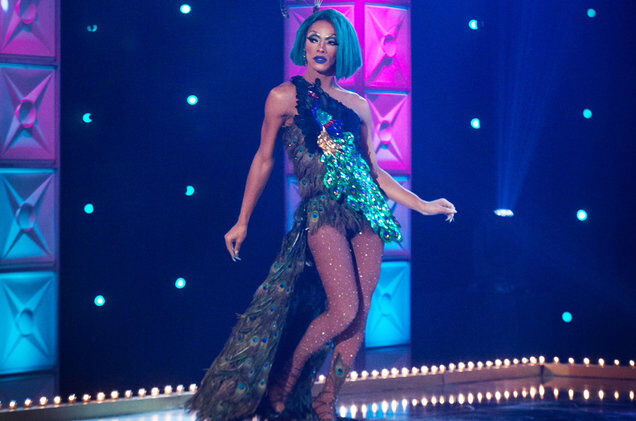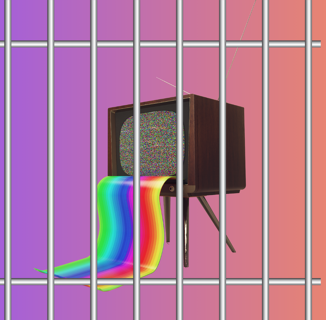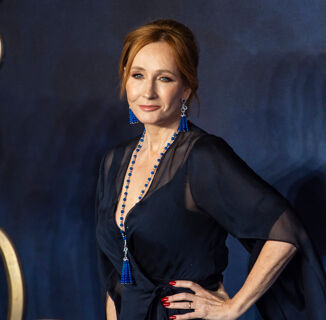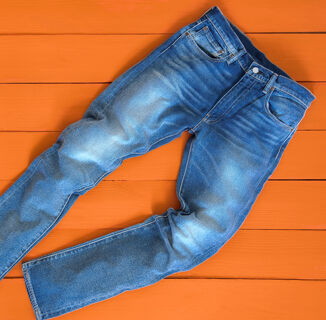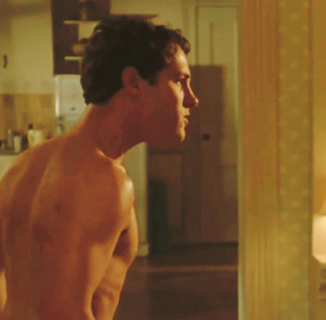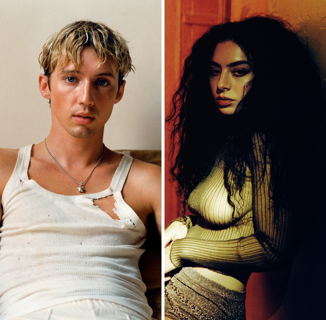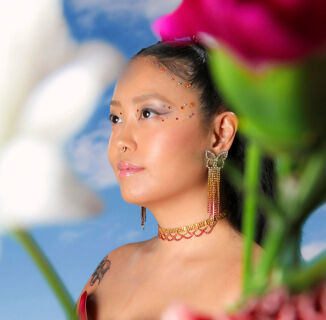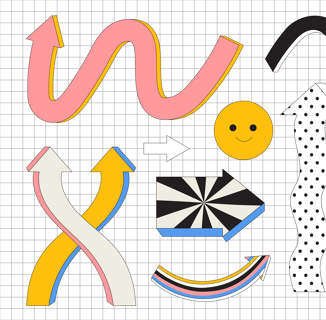On most seasons of RuPaul’s Drag Race, tension fills the workroom. The competition causes tempers to boil. Derrick Berry comes for Naomi Smalls and Bob the Drag Queen. Shangela and Mimi Imfurst hurl drinks past each other’s heads. Aja harangues Valentina, iconically. And while season 10 has had no shortage of tension, the season-long narrative arc goes beyond beef. Season 10’s legacy will be that it didn’t shy away from discussing black queer trauma and delved, with confidence, into the LGBTQ community’s racism problem.
What exactly am I talking about when I talk about trauma? Trauma is a an emotional response to a terrible event, according to the APA. But we also know that LGBTQ people experience trauma due to the minority stress of heterosexism and homophobia. We also know that, in America, systemic racism and slavery has resulted in intergenerational trauma and inherited stress among many Black Americans. Put bluntly: slavery, Jim Crow era, segregation stress syndrome and mass incarceration can pass through generations, baked into Black Americans’ DNA.
To paraphrase season 10 contestant The Vixen, it’s hard being a black gay drag queen in America, for the reasons listed above and more.
By now, you’ve probably formed an opinion of season 10’s Chicago queen The Vixen. More than any other queen this season, The Vixen has inspired swift, unbudging judgment. Critics and trolls tweet her every day, usually to express their dislike for her and usually with either racist text or subtext. At a recent viewing in West Hollywood, I saw a group of all white older gays boo The Vixen as she lip synced for her life against Blair St. Clair.
This week’s Drag Race episode returns to last week’s emotional episode, in which The Vixen expressed anger at her fellow contestants for saying that she deserved to go home. This week, Asia O’ Hara sidebars with The Vixen about her anger towards other queens, specifically Eureka, the receiver of most of The Vixen’s vitriol. While discussing The Vixen’s prior outburst, Asia O’Hara brings up The Vixen’s story about how someone once commented about “South Side trash that ruined Pride.”
America allows white people so much agency that they can create trauma in people of color then castigate them for it.
The Vixen spoke about this incident to Chicago Reader in 2016.
“You live in Chicago,” The Vixen said at the time. “We all know what you mean when you talk about people from the south side.” The Vixen said she later performed Beyonce’s “Don’t Hurt Yourself” in a shirt that said “South Side Trash.”
When speaking with the Vixen, Asia O’Hara connects the dots between The Vixen’s own experiences with racism in the LGBTQ community and her interactions with Eureka. Asia implies that perhaps The Vixen is angry with Eureka because Eureka represents a larger problem that The Vixen has with the way black queer people are treated in the community.
Asia doesn’t come out and talk specifically about whiteness during what’s shown on screen, but it’s clear that what she’s talking about is the how The Vixen’s rejection from the white LGBTQ community has led her to resent what may very well look like easy and consistent praise from the judges for Eureka.
Among QPOCs, we know that white people, white voices and white experiences in the community will always be elevated above black and brown people, voices and experiences. We all deal with double minority stress, especially in the LGBTQ community. While many white LGBTQ people might feel easily welcomed into among other queer people, queer people of color, especially black queer people, often encounter more deep-seated racism within the community at large. Queer spaces like bars, bathhouses or even LGBT centers may not be havens at all because of racism.
The Vixen, like myself and other QPOC, have to ask ourselves how much we are willing to mess with whiteness when it’s so often been a source of pain, humiliation and lowered self-esteem.
Throughout my own reporting career, I’ve confirmed stories like The Vixen’s. A Washington, D.C. gay bar asked that a black model be replaced with a “hot white guy” in its advertisement. A Denver gay bar mounted a Trump-inspired Mexican wall. The owner of Philadelphia gay bar iCandy was caught on video using the n word repeatedly and denigrating black patrons.
When Asia talks about The Vixen’s own struggle with her fellow white contestants, she’s also displaying the struggle that a lot of QPOC face. The Vixen, like myself and other QPOC, have to ask ourselves how much we are willing to mess with whiteness when it’s so often been a source of pain, humiliation and lowered self-esteem. We ask ourselves whether we can enjoy majority-white spaces, we question whether we can enter a relationship with a white partner and we wonder if we can stomach if another white friend one day shows us their inherited anti-blackness.
And it’s no surprise that season 10 has been the one to nail this narrative. This season cast five black queens and refused to box any of them into a preconceived notion of black queendom. A few months ago, Kennedy Davenport said, “Fuck my drag, right?” and season 10 answered that question with a multi-faceted look at what it means to be a black queer drag queen.
When The Vixen unearthed her own trauma around whiteness in the queer community on Drag Race, it rippled throughout the fandom. Many black and brown queens came from a place of a compassion and understood her struggle to find a place in a community that seems at times too willing to marginalize us. White queers, often never blind to whiteness and its corrosiveness, couldn’t see The Vixen’s vulnerability, only her anger, and many targeted her as an “angry black woman” a narrative The Vixen herself told Aquaria she wanted to avoid.
What occurred, then, was a vicious cycle. The Vixen had experienced the trauma that so many black queer and nonblack queer POC experience. White people casted her out, creating trauma. That trauma caused anger, which she expressed and analyzed on national television. Then, a lot of white people online harangued her because of her whiteness-induced trauma. America allows white people so much agency that they can create trauma in people of color then castigate them for it.
What then, does it mean to show love for The Vixen? There is no easy answer.
The Vixen’s presence on season 10 has become such a dominant thread because it mimics the real rift between white queers, black queers and nonblack queers of color.
In her essay “Love as the Practice of Freedom,” bell hooks wrote that the way America conceptualizes love often mirrors systems of domination, like capitalism, and that these notions of love often include racism, sexism and other social ills. Though she’s not talking about the LGBTQ community in particular, how fitting is it that hooks writes, “It has always puzzled me that women and men who spend a lifetime working to resist and oppose one form of domination can be systematically supporting another.”
Yes, hooks is reading white members of the LGBTQ community and their anti-blackness for filth, even if she didn’t realize it. Thinking about The Vixen and her presence on the show, is it not telling that so many fans feel that The Vixen has not “earned” her love. That, because of the nature of her particular trauma, she has not “worked” as hard as the other girls at earning a fandom?
What then, does it mean to show love for The Vixen? There is no easy answer. But, perhaps, rather than questioning The Vixen’s actions, we must question how we create spaces that antagonize black queer people and what we’re doing to deconstruct or alter them.
Help make sure LGBTQ+ stories are being told...
We can't rely on mainstream media to tell our stories. That's why we don't lock our articles behind a paywall. Will you support our mission with a contribution today?
Cancel anytime · Proudly LGBTQ+ owned and operated
Read More in Culture
The Latest on INTO
Subscribe to get a twice-weekly dose of queer news, updates, and insights from the INTO team.
in Your Inbox

